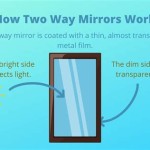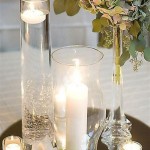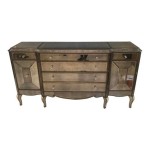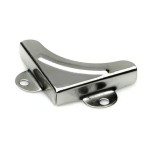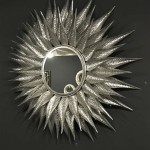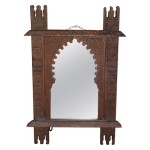Around the Corner Mirror: A Comprehensive Guide
An around-the-corner mirror, also known as a convex mirror, offers a wide field of view, crucial for maximizing visibility in tight spaces. These mirrors are commonly found in various settings, including residential homes, commercial establishments, and automotive applications. Their unique design and functionality provide significant benefits, making them an invaluable tool for enhancing safety and convenience.
Understanding the Design and Functionality
Unlike traditional flat mirrors, around-the-corner mirrors feature a curved reflective surface that bulges outward. This convex shape allows the mirror to reflect light rays from a larger area, effectively expanding the user's field of vision. The wider viewing angle enables the user to see objects that would otherwise be hidden around corners or behind obstacles. The degree of curvature of the mirror determines the extent of its field of view; a more pronounced curve provides a broader view.
Key Advantages of Around-the-Corner Mirrors
Enhanced Visibility and Safety
The primary benefit of around-the-corner mirrors is their ability to enhance visibility. This is crucial in situations where a clear view is limited by obstacles, such as blind corners in hallways, parking garages, or intersections. By providing a wider field of vision, these mirrors help prevent accidents by alerting users to potential hazards that might otherwise be missed.
Improved Security
In high-security settings, around-the-corner mirrors are instrumental in deterring criminal activity and enhancing overall security. They allow security personnel to monitor areas that are not directly visible, improving situational awareness and enabling prompt intervention if necessary. These mirrors are particularly effective in retail settings, where they can be installed at strategic points to deter shoplifting and other forms of theft.
Convenience and Accessibility
Beyond safety and security, around-the-corner mirrors offer practical advantages, such as facilitating ease of movement. They are commonly used in hospitals and care facilities to enable patients and caregivers to see around corners, promoting independence and accessibility. In residential homes, they can be installed in hallways or stairwells to improve visibility and prevent falls, particularly for elderly individuals or those with limited mobility.
Applications of Around-the-Corner Mirrors
Residential
In homes, around-the-corner mirrors can be strategically placed in hallways, stairwells, and corners to improve visibility and prevent accidents. They are particularly useful in areas with limited space, such as narrow corridors or tight corners, where a clear view might be obstructed. They can also be mounted in kitchens or bathrooms to allow residents to see around corners and avoid collisions.
Commercial
Commercial establishments, such as retail stores, restaurants, and offices, frequently utilize around-the-corner mirrors for security, safety, and customer service purposes. They can be installed in aisles and corners to deter shoplifting and provide staff with a wider view of the store, enhancing customer service and ensuring a safe environment for employees and shoppers.
Automotive
Convex mirrors are widely used in automotive applications as rear-view mirrors. Their wide field of view allows drivers to see more of what's behind them, reducing blind spots and improving road safety. These mirrors are also commonly used in trucks and public buses to provide drivers with a comprehensive view of the road.
Types of Around-the-Corner Mirrors
Around-the-corner mirrors are available in a variety of sizes, shapes, and materials, making them suitable for various applications. Common types include:
Standard Convex Mirrors:
These mirrors come in various sizes and are typically made of acrylic or glass. They offer a wide field of view and are commonly used for general safety and security purposes.Security Mirrors:
Designed for use in high-security areas, these mirrors often feature a more robust construction and may incorporate features such as shatter-resistant materials.Panoramic Mirrors:
These mirrors offer an exceptionally wide field of view, designed to encompass a large area. They are often used in parking garages, warehouses, and other large spaces.Retrofit Mirrors:
These mirrors are designed to be easily installed over existing surfaces, such as walls, doors, or ceilings. They are a convenient option for retrofits or where permanent installation is not possible.
The choice of mirror type depends on the specific application and requirements. Factors to consider include the desired field of view, installation location, and budget.
Installation and Maintenance
Installing around-the-corner mirrors is a straightforward process, and many models come with easy-to-follow instructions. They can be mounted using screws, adhesive strips, or brackets, depending on the surface and desired installation method. For optimal performance and longevity, it's important to maintain the mirrors regularly by cleaning them with a soft cloth and mild detergent. Avoid using abrasive cleaners or sharp objects that can damage the reflective surface.

All You Need To Know About Safety Mirrors

Jan Chipchase How To See Around Corners

Traffic Mirrors For Blind Corners Nikls One Call Property Services

Instructions For Corner Mirror

Outdoor Driveway Mirrors

New Mout Tactics Mirror Based Sighting Devices For Tactical Small Arms Defensereview Com Dr An Technology And Military Defense With Particular Focus On The Latest Greatest Firearms

Why Are Convex Mirrors Used In S Insight Security

Convex Mirrors See What S Around The Corner Fire Safety Information

Why Are Convex Mirrors Used In S Insight Security

How To Reverse Around A Corner Diary Of An Adi


